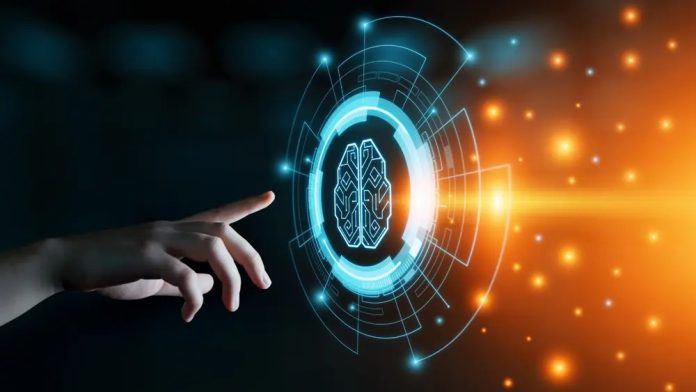What is Artificial Intelligence?
Artificial intelligence is a branch of computer science that is concerned with the creation of machines to perform tasks that require human intelligence.
The applications of AI are natural language processing, expert systems, machine vision, and speech recognition.
AI is a field with multiple approaches, transformed by deep learning and machine learning. These advancements are creating a paradigm shift in every sector of the tech landscape.
Artificial intelligence allows machines to model and sometimes even surpass human abilities. From AI tools like ChatGpT and Google’s Bard to self-driving cars, Ai is becoming a crucial part of our daily lives. Companies across every industry are investing in AI technologies to reach a new height of success and to drive innovation and progress.
How Does AI Work?
As the hype around AI has accelerated, vendors are eager to show their products and services that use it. However, most of the time they call AI just a component of technology like machine learning. For creating and training machine learning algorithms AI requires specialized hardware and software. There are no one-size-fits-all programming languages when it comes to AI, but Python, R, Java, C++, and Julia have some features that are popular with AI developers.
AI systems operate by ingesting huge amounts of labeled training data. Then they carefully analyze this data to find the correlations and patterns and these patterns help them to make predictions about the future states. For instance, a chatbot can learn to have to generate lifelike conversations with folks when it is fed with text examples. And after reviewing millions of examples an image recognition tool can identify and describe objects in images. Because of the advancements in AI techniques, more efficient images, realistic text, music, and other media are created.
AI programming focuses on cognitive skills such as:
- Creativity
- Learning
- Reasoning
- Self-correction
Creativity:
This part of AI programming uses neural networks, statistical methods, rules-based systems, and some other AI techniques to create new text, images, ideas, and music.
Learning:
This AI aspect focuses on obtaining data and building rules to transform it into actionable information. The term rules mean algorithms, it provides step-by-step instructions to the computing devices for how to complete a task.
Reasoning:
This part of AI programming focuses on selecting the appropriate algorithm to get the desired outcome.
Self-Correction:
This aspect of AI programming is aimed at constantly fine-tuning algorithms and ensuring they deliver the most authentic results possible.
Artificial Intelligence Examples:
Artificial intelligence comes in numerous forms from powering chatbots, wearable fitness trackers, and navigation apps. These examples illustrate the breadth of AI applications.
ChatGPT
ChatGPT is an artificial intelligence chatbot that produces written content in a number of formats such as blogs, essays, answers to questions, and code. The launch date of chatGPT is 30 November 2022 by OpenAI. A large language model powers ChatGPT, which is designed to emulate human writing closely. In May 2023 chatGPT became available as a mobile app for iOS devices and in July 2023 for Android devices.
Self-driving Cars
One of the great examples of deep learning is self-driving cars. This technology detects the objects around the car, identifies the traffic signals, and judges the distance from other cars and much more with deep neural networks.
Google Maps
In addition to location data from smartphones, Google Maps uses user-reported data on things like construction and car accidents, to monitor the traffic and what the fastest route will be.
Snapchat Filters
Machine learning algorithms are used in Snapchat filters in order to distinguish between the background and the image’s subject. It also tracks the movements of the face in real-time and makes adjustments on the screen based on what the user is doing. AI has transformed selfies into fun experiences that have never been before.
Smart Assistants
The common examples of smart assistants are Alexa, Siri, and Cortana. These assistants use natural language processing to receive commands from the users to set reminders, control lights in your home, fetching online information. These AI marvels are designed to make life more convenient, easier and improve your experience over time. They learn your preferences and deliver better and more tailored responses.
MuZero
In the race to achieve true artificial general intelligence, MuZero, a computer program created by DeepMind, is a promising frontrunner. It s designed to master games. It has been successful in playing numerous board games and video games such as chess, and the whole suite of Atari games through brute force.
Wearables
In the healthcare industry, wearable sensors and devices work like magic. They leverage deep learning to assess the health condition of the patient such as heart rate, blood pressure, and blood sugar levels. One of the amazing things it can do is it can analyze the past medical data of the patient and can also predict future health issues. It is beneficial for both doctors and patients such as doctors can provide personalized care and patients can stay ahead in their journey of health. It is the smart way to take your healthcare journey to the next level.
Advantages of Artificial Intelligence
Lessen time for data-heavy tasks:
AI is commonly used in data-heavy industries such as insurance, banking, securities, and pharma. It is widely used because it works its magic by lessening the time to analyze financial services and big data sets. The prime example is financial services, as they rely on AI to uncover fraudulent activities and process loan applications. With the help of AI, these industries are providing more security, efficiency, and innovation. AI has totally revolutionized the way industries operate and serves customer before.
Delivers Consistent Results:
These translation tools deliver a high level of consistency and help businesses to reach customers in their native language.
Improves Customer Satisfaction Through Personalization:
AI enhances customer satisfaction through personalized content, ads, messaging, recommendations, and websites, catering to individual needs and preferences.
Good at Detail-Oriented Jobs:
AI also helps to diagnose certain cancers such as melanoma and breast cancer.
Saves Labor and Enhances Productivity:
In addition to warehouse automation, machine learning, and AI are expected to increase the use of warehouse automation, which grew during the pandemic.
AI-powered Virtual Agents are Always Available
AI programs do not take rest or breaks. It provides services nonstop and 24/7.
Strong AI vs. Weak AI
AI is categorized into strong and weak
Strong AI:
The other name for strong AI is artificial general intelligence (AGI), which refers to programming that mimics the cognitive abilities of the human brain. When faced with an unfamiliar task, a strong AI system can apply knowledge from one domain to another and find a solution autonomously using fuzzy logic.
Weak AI: The other name for weak AI is narrow AI. it is designed and trained in a way to complete the specific task. A common example of weak AI is industrial robots and virtual personal assistants (like Apple’s Siri).
WRAP UP!
Artificial intelligence is a transformative force that shapes the world around us. AI brings us nearer to the feats that were considered impossible and no one thinks about it before. AI doesn’t stop here it is continuously evolving and expanding its capabilities. An unexpected future is nearer where human-AI collaboration becomes the norm and revolutionizes every industry in countless ways.























